North Trout Lake Yawkey-Bissel Logging Camp and Railroad
Introduction
Text-to-speech Audio
Prior to Wisconsin’s newly formed Department of Forestry setting up their headquarters on Trout Lake in 1912, numerous lumber companies had been logging the region for decades. Yawkey-Bissell Lumber Company had a logging camp on North Trout Lake and operated a rail line that would ultimately be linked to Boulder Junction in 1913. The Yawkey-Bissell logging camp and railroad provided important logistical support for the fledgling Department of Forestry.
Yawkey-Bissell operated a classic Northwoods second phase or railroad logging operation until 1912. The old logging camp, railroad and cutover land soon became part of Wisconsin’s Forest Reserves and ultimately the Northern Highland American Legion Forest.
No real remnants of the Yawkey-Bissell logging camp remain, but the site of the camp is the current parking lot for North Trout Lake boat landing and the campground entrance.
Images
Yawkey-Bissell Camp on Trout Lake
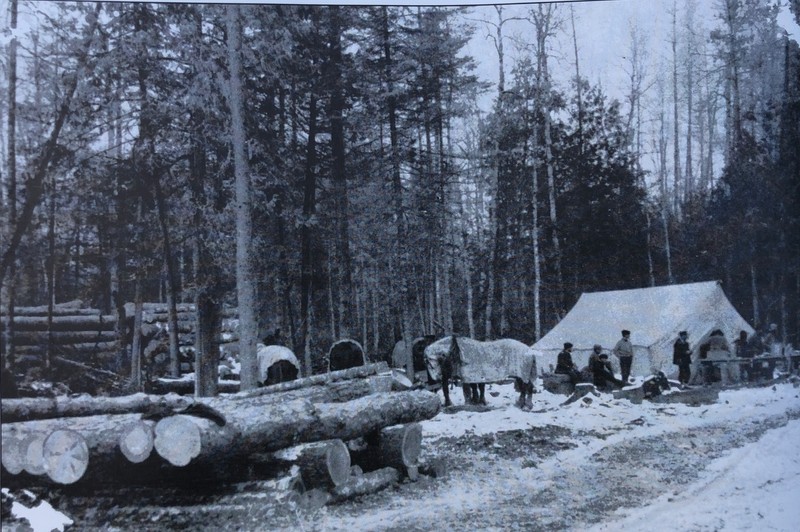
Yawkey-Bissel Railroad line along Trout Lake shore
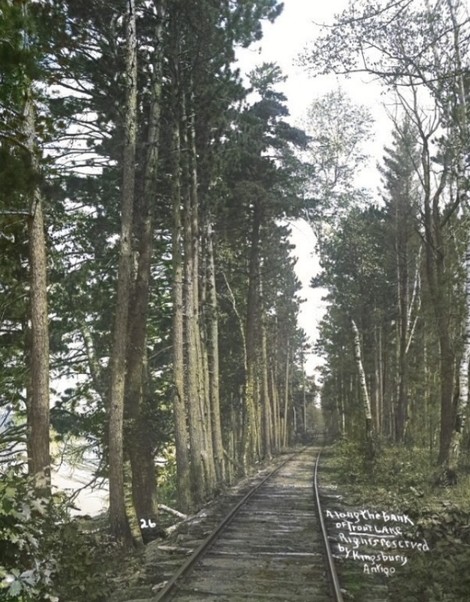
Winter scene at Yawkey-Bissell Camp
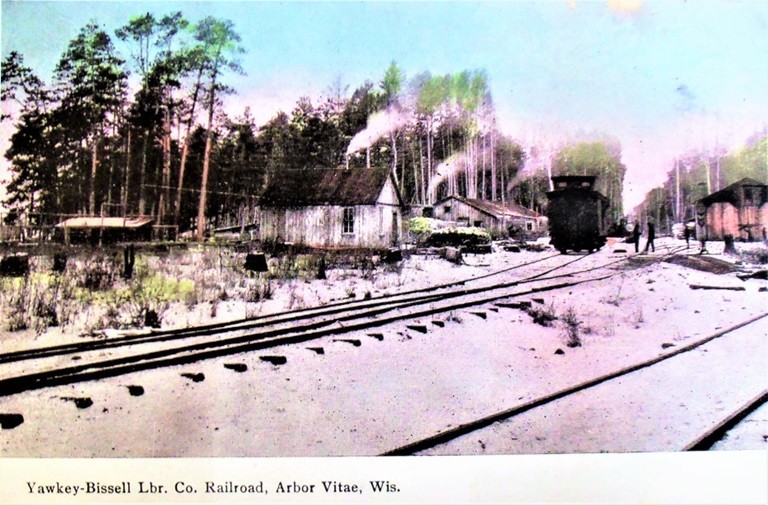
Laying railroad tracks
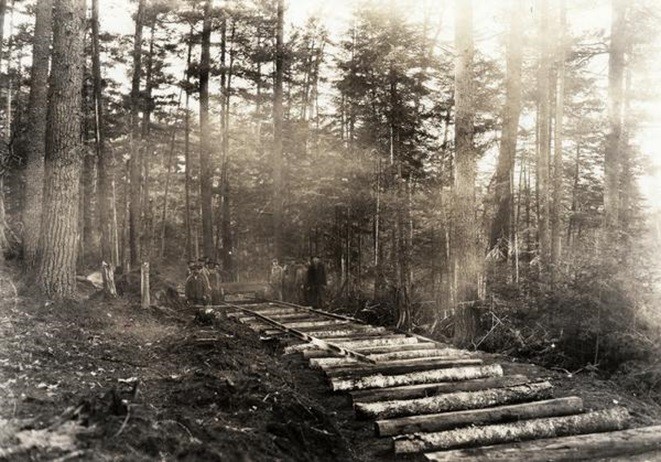
Yawkey-Bissell Arbor Vitae Mill
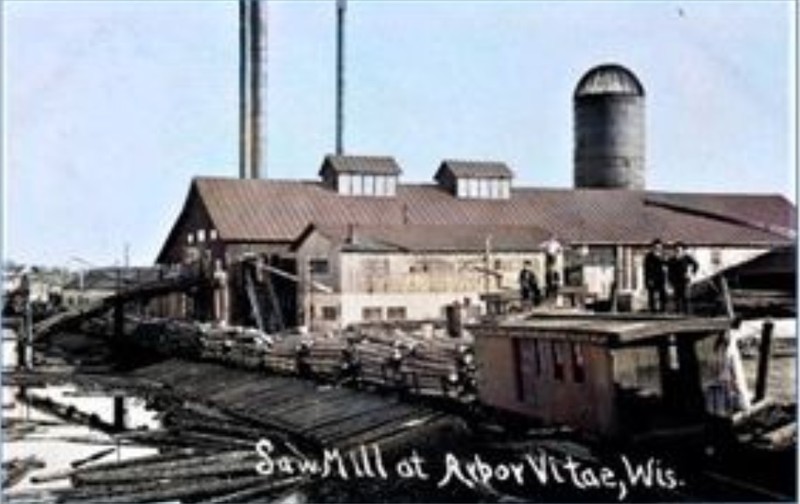
Yawkey-Bissell Arbor Vitae Mill
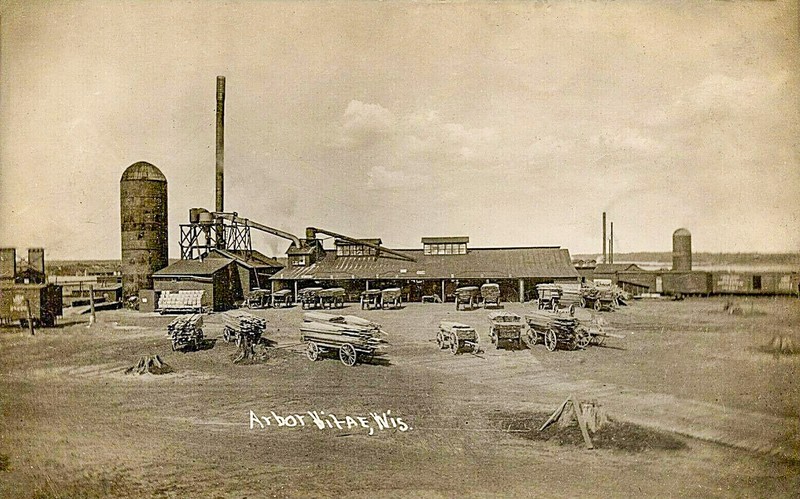
Yawkey-Bissell Hazelhurst Mill
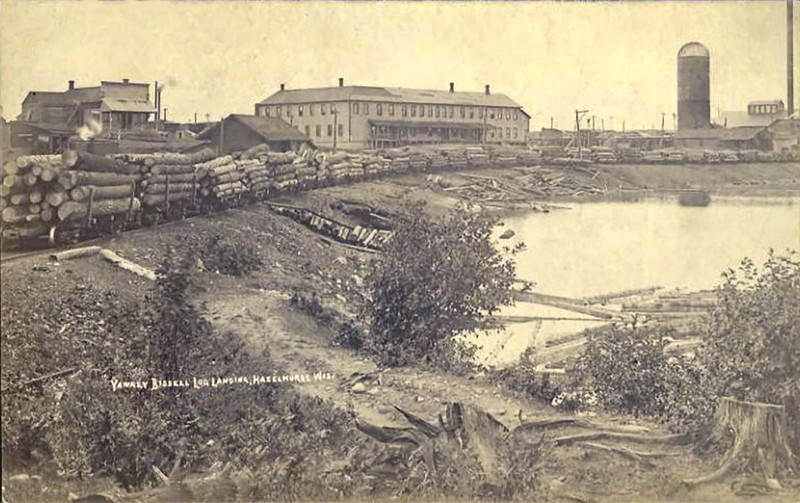
Backstory and Context
Text-to-speech Audio
Trout Lake was initially logged as part of first phase or river drive logging of white pines. These “cork pine” logs could float for months or years. River drive loggers did their cutting in the winter and would harvest several miles around Trout Lake and its tributaries. The white pines would be carried by sleds to the water’s edge so in the spring the pine could begin their downstream journey to mills along the Chippewa or Mississippi rivers.
Yawkey-Bissell Lumber Company had mills all across the Northwoods that processed logs from its camps into a variety of products. The mills in Arbor Vitae and Hazelhurst likely processed the wood cut around Trout Lake. Under second phase or railroad logging, camps and mills were linked by rail. Timber such as red pine, maple, oak, cherry, birch, basswood, tamarack as well as white pines too distant from strong flowing streams were selected for the mills. Railroads made year-round logging possible, and the pace to harvest trees grew.
Images of the Trout Lake logging camp reveal a robust camp and railroad. In 1903, Yawkey-Bissell railroad spurs reached Trout Lake, and those harvested logs were hauled through camp and along the east side of the lake to their mills. Northwoods historian Michael Dunn shared, “Yawkey-Bissell closed its mill in 1912 and sold its land to the department of forestry for a dollar and one quarter per acre. The Cathedral Pines and pretty road along the shore of Trout Lake are part of the legacy here.” Importantly, Yawkey-Bissell spared the cutting of trees in the area of Cathedral Point, leaving a magnificent area of old growth timber to be part of the Wisconsin Department of Forestry headquarters.
Yawkey-Bissell remains a Wisconsin classic logging story. Early Northwoods operations began as, “…1888 construction was begun on a line extending southeast from Hazelhurst by the Yawkey & Lee Lumber Company. This line was not a common carrier. It was referred to as the Lake Catherine and Southeastern. In 1892, Yawkey & Lee became the Yawkey-Bissell Lumber Company.” Just before its Northwoods mills and logging operations ended in 1912, Yawkey-Bissell helped transport the first seedlings to the new Trout Lake tree nursery. This generous donation of rail support and delivery to the Wisconsin Department of Forestry helped launch a new tradition of reforestation and scientific management aimed at creating sustainable forests for future generations.
Timothy Sasse cites, “The Trout Lake Railroad was sold to the Milwaukee Road on Aug. 29,1913 for $10,000. This gave the Milwaukee a shortcut from Arbor Vitae to Boulder Junction and allowed it to abandon most of its line between Cutler Jct and Star Lake.” In the end, Yawkey-Bissell lines improved access and timber hauling, and linked Trout Lake and the Wisconsin Department of Forestry more closely with the community of Boulder Junction.
Sources
Boulder Junction, The Early Years, Friends of the Library, Boulder Junction, Wisconsin 1996.
Dunn, Michael. Manitowish Waters Historical Society.https://mwhistory.org/2016/wp-content/uploads/2018/04/A-Thumbnail-Sketch-of-Logging-Activites-around-the-Manitowish-Waters-Area.pdf
Sasse, Timothy. Wisconsin Railroads. Onedia County. https://sassmaster.tripod.com/oneid.html
Sasse, Timothy. Wisconsin Railroads. Vilas County. https://sassmaster.tripod.com/oneid.html
Boulder Junction, The Early Years, Friends of the Library, Boulder Junction, Wisconsin 1996.
Ticket to Buswell Facebook Site
Ticket to Buswell Facebook Site
UW Madison Digital Collection
Ticket to Buswell Facebook Site
Ticket to Buswell Facebook Site
Ticket to Buswell Facebook Site
